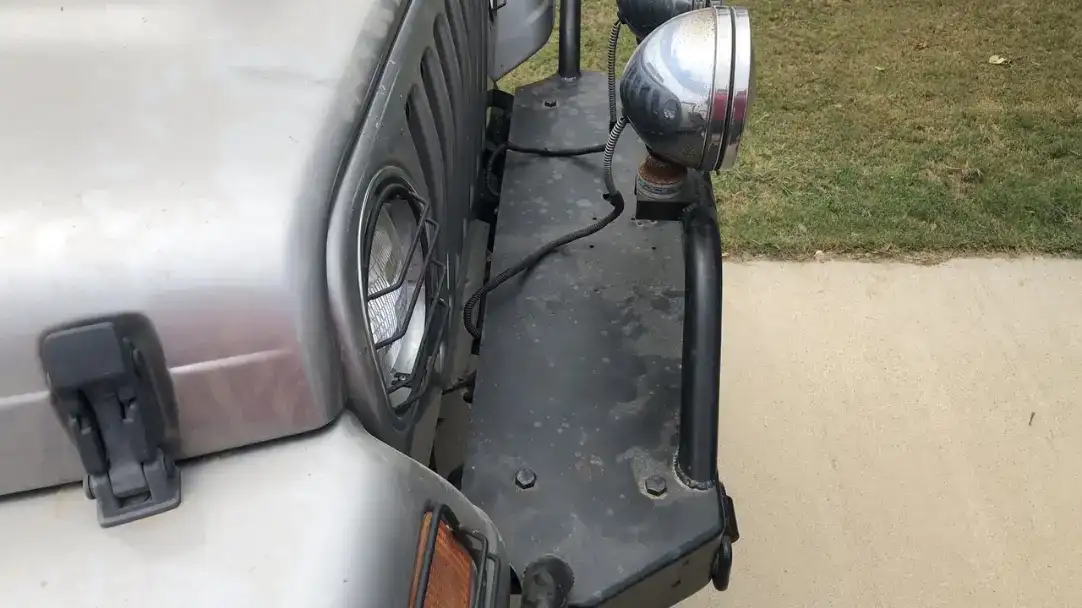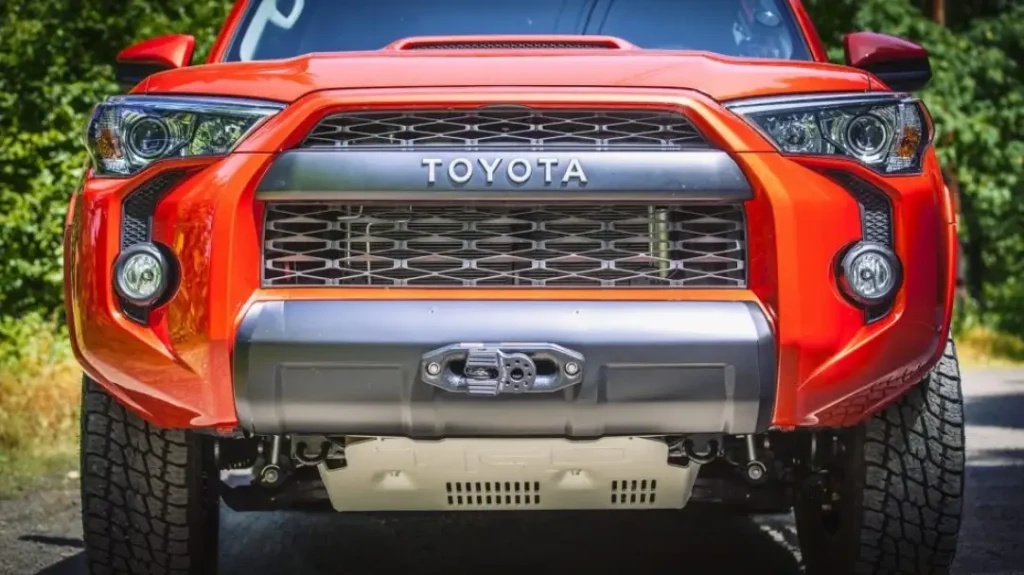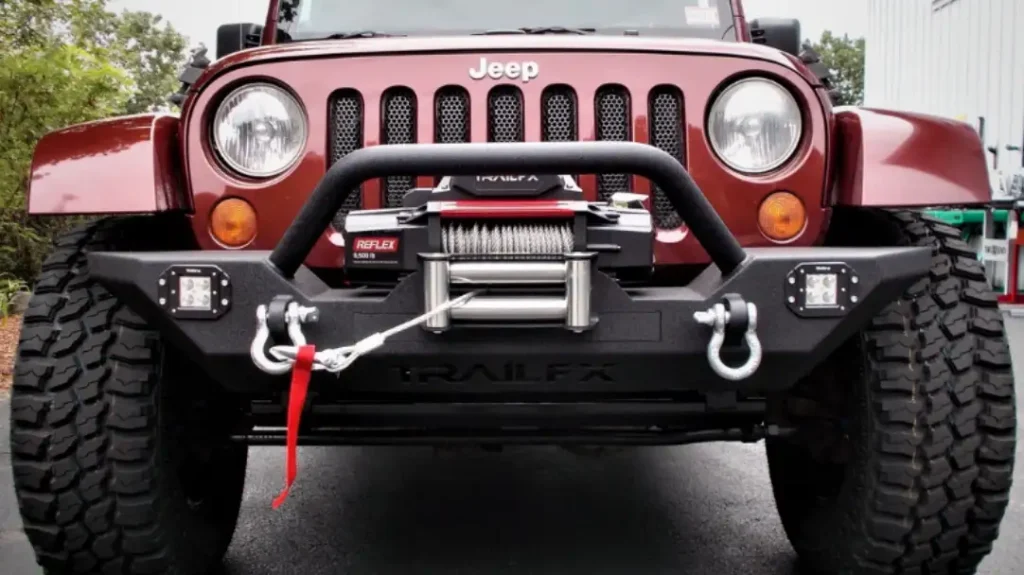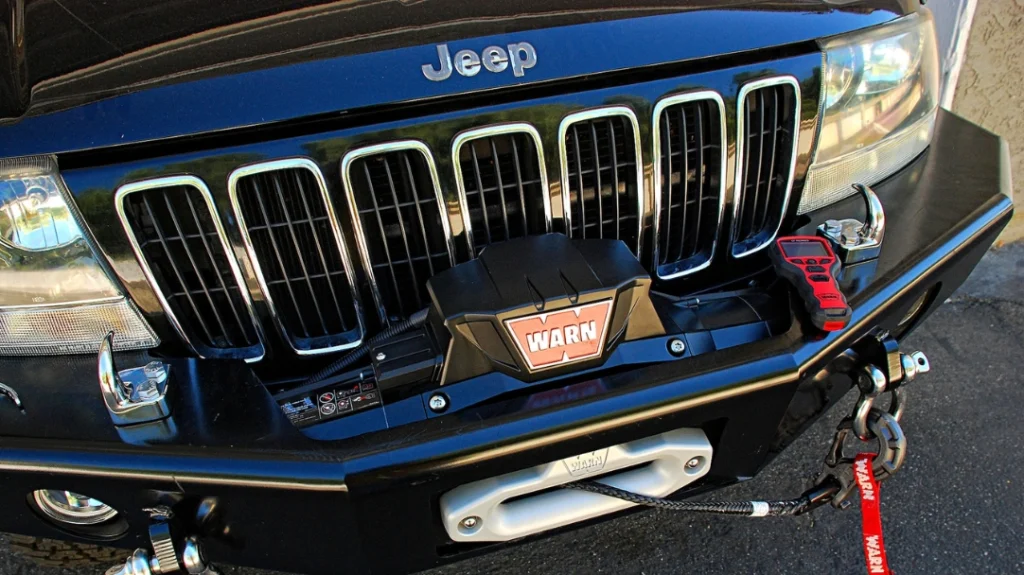Are you an off-roading enthusiast looking to take your adventures to the next level? Do you enjoy pushing your vehicle to the limit and tackling challenging terrain?
If so, you may have considered installing a winch on your vehicle.
But before you do, it’s important to understand the importance of a winch plate.
This crucial component can make all the difference in the safety and effectiveness of your winch. So, do you need a winch plate? Let’s dive in and find out.
Do I need a winch plate?
Yes, you need a winch plate to safely and securely mount a winch onto your vehicle.

A winch plate provides a stable and strong mounting point that can handle the weight and force of the winch.
Without a winch plate, the winch may not be able to function properly and could potentially damage your vehicle.
Types of Winch Plates
There are two main types of winch plates: universal winch plates and vehicle-specific winch plates.
Universal winch plates
Universal winch plates are designed to fit a wide range of vehicles and are a good option if you have multiple vehicles or frequently switch between vehicles.
However, universal winch plates may require modifications to fit your specific vehicle properly.
Vehicle-specific winch plates
Vehicle-specific winch plates are designed to fit a specific make and model of a vehicle.
These winch plates are often easier to install and provide a better fit, ensuring that the winch can handle the weight of the vehicle and the load being pulled.
Winch Plate Installation
Winch plate installation can vary depending on the type of winch plate and the vehicle it is being installed on.
However, most winch plates require some basic steps, including:
- Remove the factory bumper or trim panel.
- Install the winch plate onto the frame of the vehicle using bolts and hardware.
- Mount the winch onto the winch plate.
- Run the wiring from the winch through the engine compartment and into the cab of the vehicle.
- Connect the wiring to the winch control switch and battery.
Benefits of Using a Winch Plate

We’ll explore the benefits of using a winch plate and how it can help you stay safe and have more fun on your off-roading adventures.
Increased Traction and Control
Off-roading can take you through all kinds of terrain, including mud, sand, rocks, and steep inclines.
In these situations, it’s not uncommon to get stuck or lose traction.
A winch plate can help you overcome these obstacles by providing a secure point of attachment for your winch.
By anchoring your vehicle to a stable point, you can apply steady, controlled force to pull yourself out of a tricky situation.
With the added traction and control, you can navigate difficult terrain with greater ease and confidence.
Safety and Reliability
Off-roading can be dangerous, and getting stuck or stranded in an isolated location can be a frightening experience.
A winch plate can help you stay safe and avoid potential hazards by providing a reliable means of recovery.
By attaching a winch to a sturdy plate, you can rest assured that your vehicle will be safely and securely anchored.
You can also trust that your winch will work effectively, even in challenging conditions.
This added level of safety and reliability can give you peace of mind and allow you to fully enjoy your off-roading adventure.
Versatility and Convenience
A winch plate is a versatile and convenient accessory that can be used for a variety of applications beyond off-roading.
You can use it to pull heavy objects, clear debris, or move equipment.
It’s also easy to install and remove, making it a practical addition to your vehicle’s toolkit.
With a winch plate, you can tackle a wide range of tasks with ease and efficiency.
Cost-Effective Solution
Off-roading can be an expensive hobby, and investing in high-quality gear can quickly add up.
However, a winch plate is a cost-effective solution that can greatly enhance your off-roading experience without breaking the bank.
It’s a durable and reliable accessory that can be used repeatedly, providing you with long-lasting value and performance.
By investing in a winch plate, you can improve your off-roading capabilities without overspending.
Factors to Consider When Choosing a Winch Plate

We will discuss the factors to consider when choosing a winch plate.
Winch Plate Compatibility
The first factor to consider when choosing a winch plate is compatibility.
Not all winch plates are compatible with all winches, so it’s crucial to ensure that the winch plate you choose is compatible with your winch.
Failure to do so can lead to safety issues and even cause damage to your winch.
Material
The material of the winch plate is another important factor to consider.
Winch plates can be made from a variety of materials, including steel, aluminum, and composite materials.
Steel is the most common material used in winch plates due to its durability and strength.
However, aluminum winch plates are lighter, which can be an advantage for vehicles that require a lighter load.
Weight Capacity
The weight capacity of the winch plate is another critical factor to consider.
Winch plates come in a variety of weight capacities, ranging from a few hundred pounds to several thousand pounds.
It’s crucial to choose a winch plate that can handle the weight of your vehicle and any other additional weight, such as aftermarket bumpers or accessories.
Bumper Compatibility
It’s essential to ensure that the winch plate you choose is compatible with your vehicle’s bumper.
Some winch plates are designed to work with specific bumpers, while others are more universal.
It’s crucial to check the manufacturer’s specifications to ensure that the winch plate will fit your bumper correctly.
Installation
The installation process of the winch plate is another important factor to consider.
Some winch plates are easy to install, while others may require more complicated installation processes.
It’s crucial to consider your skill level and the tools required for installation before choosing a winch plate.
Design
Winch plates come in a variety of designs, each with its unique features and benefits.
Some winch plates have integrated fairleads, while others have additional mounting points for accessories.
It’s essential to choose a design that suits your needs and requirements.
Brand Reputation
Brand reputation is an important factor to consider when choosing a winch plate.
Choosing a reputable brand ensures that you’re getting a high-quality product that is built to last.
Researching different brands and reading reviews can help you make an informed decision when choosing a winch plate.
Price
Price is always a factor to consider when making any purchase, and winch plates are no exception.
Winch plates can range in price from a few hundred dollars to several thousand dollars.
It’s crucial to consider your budget and choose a winch plate that meets your needs and requirements without breaking the bank.
Warranty
A warranty is another essential factor to consider when choosing a winch plate.
A good warranty can provide you with peace of mind, knowing that your investment is protected.
It’s crucial to read and understand the warranty before making a purchase.
Can You Install a Winch Without a Winch Plate?

If you’re looking to install a winch on your vehicle but don’t have a winch plate, you may be wondering if it’s possible to do so.
The good news is that it is possible to install a winch without a winch plate, although it can be a bit more challenging. ]
We’ll walk you through the process of installing a winch without a winch plate.
Step 1: Choose a Suitable Mounting Location
The first step in installing a winch without a winch plate is to choose a suitable mounting location.
You’ll want to find a location on your vehicle’s frame that can support the weight of the winch and the load it will be pulling.
Once you’ve found a suitable location, mark the spot and prepare to install the winch.
Step 2: Install a Winch Mounting Channel
You’ll need to create a mounting surface to install the winch. One way to do this is to install a winch mounting channel.
This is a piece of steel that is bolted to the frame of your vehicle and provides a flat surface for the winch to mount to.
To install the winch mounting channel, first, clean the area where you’ll be installing it.
Then, position the channel where you want it and mark the location of the bolt holes. Drill holes in the frame and attach the channel with bolts and washers.
Step 3: Install the Winch
Once the winch mounting channel is in place, you can install the winch itself.
This is done by bolting the winch to the mounting channel using the bolts and washers that came with the winch.
Make sure to follow the manufacturer’s instructions for the proper torque specifications for the bolts.
Step 4: Install the Winch Cable
With the winch installed, you can now attach the winch cable.
Begin by threading the cable through the fairlead and then attaching it to the winch drum.
Make sure to follow the manufacturer’s instructions for the proper way to attach the cable.
Step 5: Test the Winch
Once the winch is installed and the cable is attached, it’s important to test the winch to make sure it’s working properly.
Turn on the vehicle and engage the winch to pull a small load. This will ensure that everything is installed correctly and that the winch is functioning as it should.
FAQ
How Do I Choose The Right Winch Plate For My Vehicle?
When choosing a winch plate, it’s important to ensure that it is compatible with your vehicle’s make and model.
You should also consider the weight and capacity of your winch to ensure that the winch plate can handle the load.
Additionally, consider any additional features you may need, such as D-ring mounts or light mounts.
Can I Install A Winch Plate Myself?
While it is possible to install a winch plate yourself, it is recommended that you have a professional install it for you.
This is because the winch plate must be securely mounted to your vehicle’s frame, and any mistakes in installation could result in damage to your vehicle or even injury.
Are Winch Plates Compatible With All Winches?
No, winch plates are not universally compatible with all winches.
It’s important to ensure that the winch plate you choose is compatible with your winch’s weight and capacity.
Some winch plates may also only be compatible with certain winch brands.
What Other Accessories Should I Consider When Installing A Winch Plate?
When installing a winch plate, consider additional accessories, such as a fairlead mount or winch cover.
These accessories can help protect your winch and make it easier to use when you need it most.
Conclusion
If you’re planning to install a winch on your off-road vehicle, a winch plate is a must-have accessory.
It provides a secure and stable mounting point for your winch, ensuring its effectiveness and safety when you need it the most.
Without a winch plate, your winch may not work properly, or worse, it could cause damage to your vehicle.
Investing in a high-quality winch plate may seem like an extra expense, but it’s a small price to pay for the peace of mind and safety it provides.
So, make sure to choose the right winch plate for your vehicle and get ready to tackle the toughest trails with confidence.
